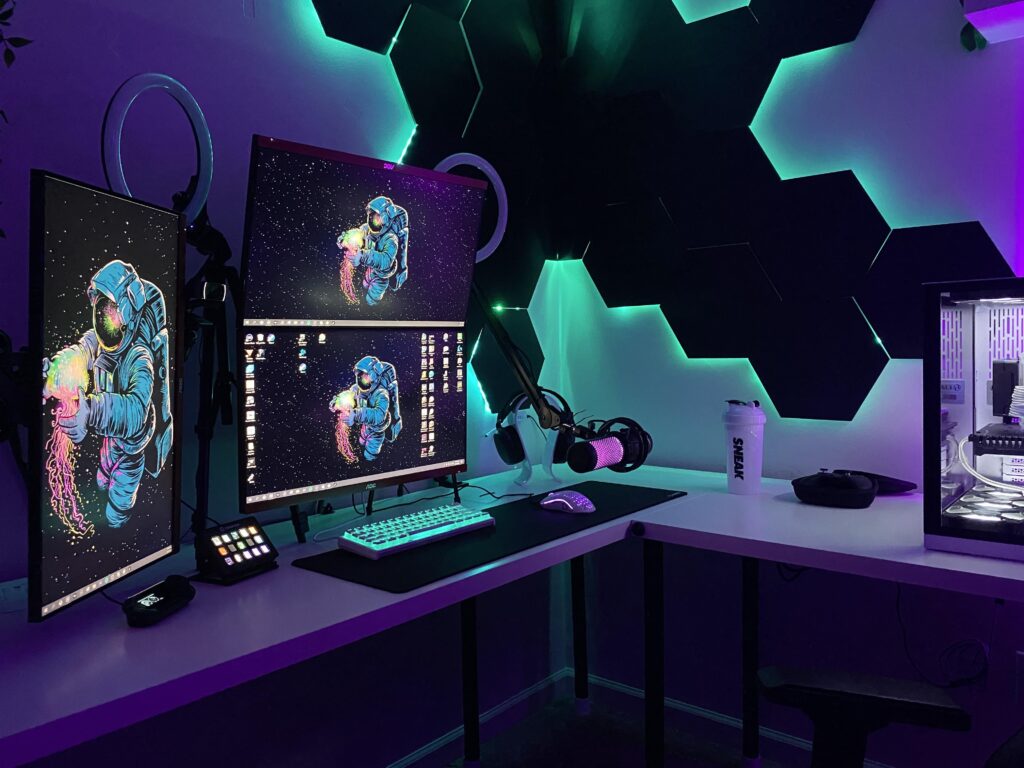Crafting Your Ultimate Game Streaming Setup: A Comprehensive Guide
In the dynamic world of gaming, streaming has emerged as a powerful platform for sharing your gaming adventures, engaging with audiences, and even building a community. If you’re ready to take the plunge into game streaming, this comprehensive guide will walk you through every step of setting up the ultimate streaming environment. From hardware to software, and from beginner basics to advanced tips, let’s delve into the world of game streaming and transform your gaming setup into a streaming powerhouse.
Understanding the Basics:
Before diving into the technical aspects, it’s crucial to understand the fundamental elements that contribute to a successful game streaming setup:
Platform Selection: Choose a streaming platform that aligns with your goals. Twitch, YouTube Gaming, and Facebook Gaming are popular choices, each with its unique community and features.
Streaming Software: Select a reliable streaming software. OBS Studio (Open Broadcaster Software) and Streamlabs OBS are popular choices for their user-friendly interfaces and powerful features.
Internet Connection: A stable and high-speed internet connection is non-negotiable. Aim for a minimum upload speed of 5 Mbps, though higher speeds are recommended for better quality.
Gaming PC Specifications: Your gaming PC’s specifications will influence the quality of your stream. Ensure your PC meets the recommended requirements for both gaming and streaming simultaneously.
Hardware Essentials for Game Streaming:
Powerful Gaming PC:
Select a gaming PC with a robust CPU and GPU. Popular choices include Intel i7 or AMD Ryzen 7 CPUs and NVIDIA GeForce RTX or AMD Radeon RX GPUs.
Dual Monitor Setup:
A dual monitor setup enhances your streaming experience. Use one monitor for gaming and the other for managing your stream, reading chat, and monitoring performance.
Quality Microphone and Headset:
Clear audio is essential for engaging with your audience. Invest in a quality microphone and a comfortable headset to ensure your voice is crisp and your gaming experience is immersive.
Webcam:
Adding a webcam to your setup allows viewers to connect with you on a personal level. Logitech C920 and Razer Kiyo are popular choices for their video quality and reliability.

Capture Card (For Consoles):
If you plan to stream console games, a capture card is essential. Elgato and AVerMedia offer reliable options for capturing and streaming console gameplay.
Optimizing Your Streaming Environment:
Proper Lighting:
Good lighting is crucial for a professional-looking stream. Position lights in front of you to reduce shadows and enhance your on-screen presence.
Green Screen:
A green screen allows you to remove the background, placing you directly in your gameplay. This creates a more polished and visually appealing stream.
Organized and Clean Setup:
Keep your streaming area organized and clutter-free. This not only enhances the visual appeal but also makes it easier to manage your setup during live streams.
Custom Overlays and Alerts:
Personalize your stream with custom overlays and alerts. Platforms like Streamlabs offer a variety of templates, or you can hire a designer for a unique look.
Fine-Tuning Your Stream:
Optimizing Stream Settings:
Configure your streaming software settings for optimal performance. This includes resolution, bitrate, and encoding settings. Experiment to find the balance between quality and performance.
Engaging with Your Audience:
Actively engage with your audience through chat. Respond to comments, ask questions, and create a welcoming atmosphere for viewers.
Network Optimization:
Prioritize network traffic for your streaming PC. Use a wired connection instead of Wi-Fi and consider setting up Quality of Service (QoS) on your router to ensure a stable connection.
Regular Testing:
Conduct regular test streams to ensure everything is functioning correctly. This allows you to catch any issues before going live and provides an opportunity to refine your setup.
Promoting Your Stream:
Social Media Presence:
Leverage social media platforms to promote your stream. Share highlights, engage with gaming communities, and create a consistent online presence.
Networking with Other Streamers:
Collaborate with other streamers by participating in communities, joining multiplayer games, and hosting or being hosted. Networking is key to growing your audience.
Consistent Schedule:
Establish a consistent streaming schedule. This helps viewers know when to expect your streams and creates a routine that encourages regular viewership.

Conclusion: Elevating Your Game Streaming Experience:
As you embark on your game streaming journey, remember that building a successful streaming setup is an ongoing process of refinement. Experiment with different settings, engage with your audience, and stay true to your unique gaming style. By combining quality hardware, a well-organized setup, and an engaging personality, you’ll be well on your way to creating a captivating and professional game streaming experience.
Happy streaming!


